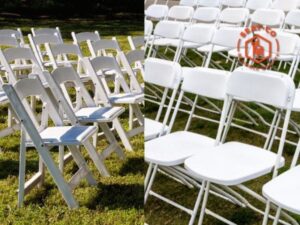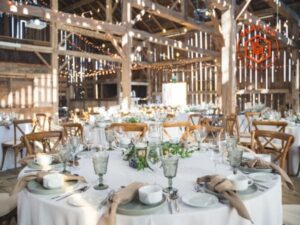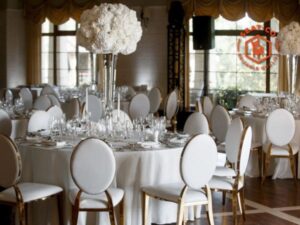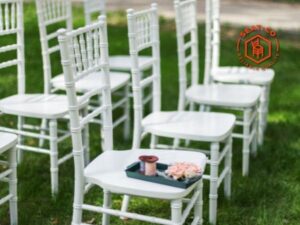Mastering Table Arrangements: A Guide to Seating Your Guests Perfectly
Written by: Marcelo Flores
Initially, planning an event and wondering how many guests can comfortably fit at each banquet table? Firstly, you’re not alone. In this concise guide, we’ll explore standard banquet table sizes and their seating capacities, ensuring your event combines comfort with style.
Table of Contents
1. Standard Banquet Table Sizes
2. Versatile Uses for Different Table Shapes
3. How to Decide Which Banquet Table to Choose
1. Standard Banquet Table Sizes
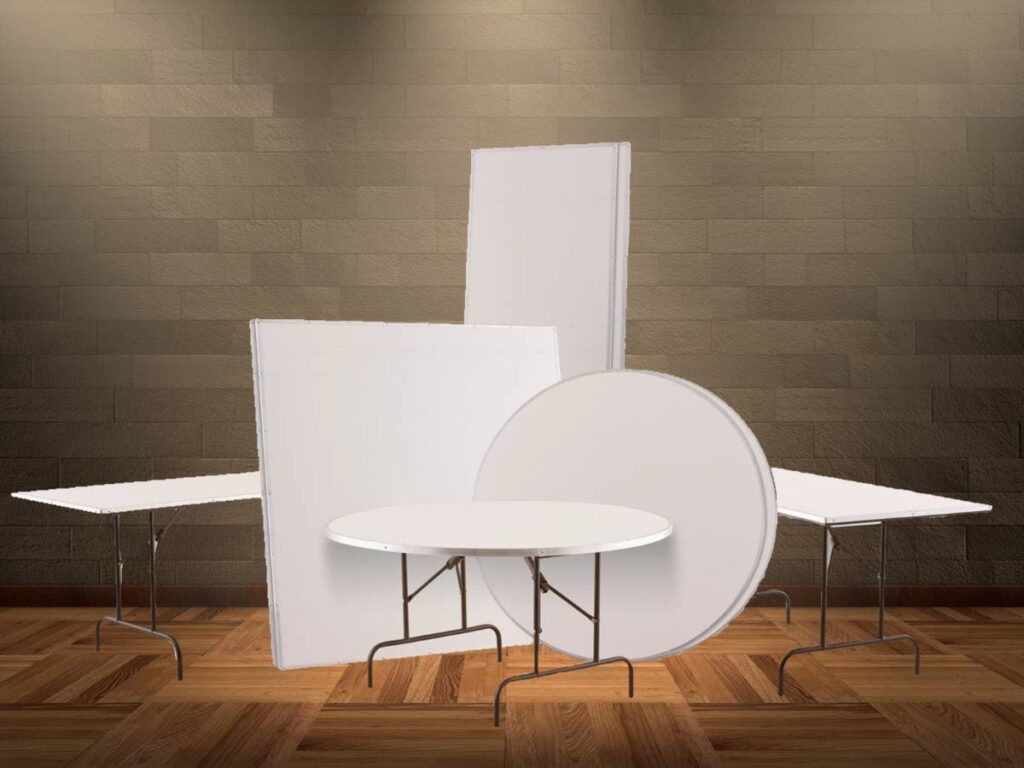
When planning the layout of an event, one of the first steps is to understand the standard sizes of banquet tables available. These tables come in various shapes and sizes, each suited for different types of events and spaces. Here’s a quick overview of the most common banquet table dimensions:
Round Tables
Subsequently, Round Tables are popular for weddings and gala dinners, offering a more intimate setting. Guests seated at round tables enjoy easier conversation and interaction.
For instance, standard sizes include:
- 60 inches: 60” Round Tables can fit 8-10 guests, 8 comfortably.
- 72 inches: 72” Round Tables can fit 10-12 guests, ideal for larger groups without compromising on comfort.
Rectangular Tables
Similarly, these are a great choice for a variety of events, from formal dinners and conferences to wedding receptions. Their linear shape makes them highly versatile for different room layouts, allowing for efficient use of space. Rectangular tables facilitate easier service access and can be combined to create longer rows, ideal for larger gatherings.
Standard sizes include:
- 6 feet (72 inches): Typically seating 6-8 people, perfect for smaller, intimate gatherings or as part of a larger arrangement.
- 8 feet (92 inches): Accommodating 8-10 people, offering more space for settings and centerpieces, suitable for more spacious venues.
Square Tables
Additionally, a less common choice, offering a contemporary and unique alternative.
They usually come in sizes like:
- 60×60 inches: Typically seating 8 people
- 70×70 inches: Accommodating 8-12 people
2. Versatile Uses for Different Banquet Table Shapes
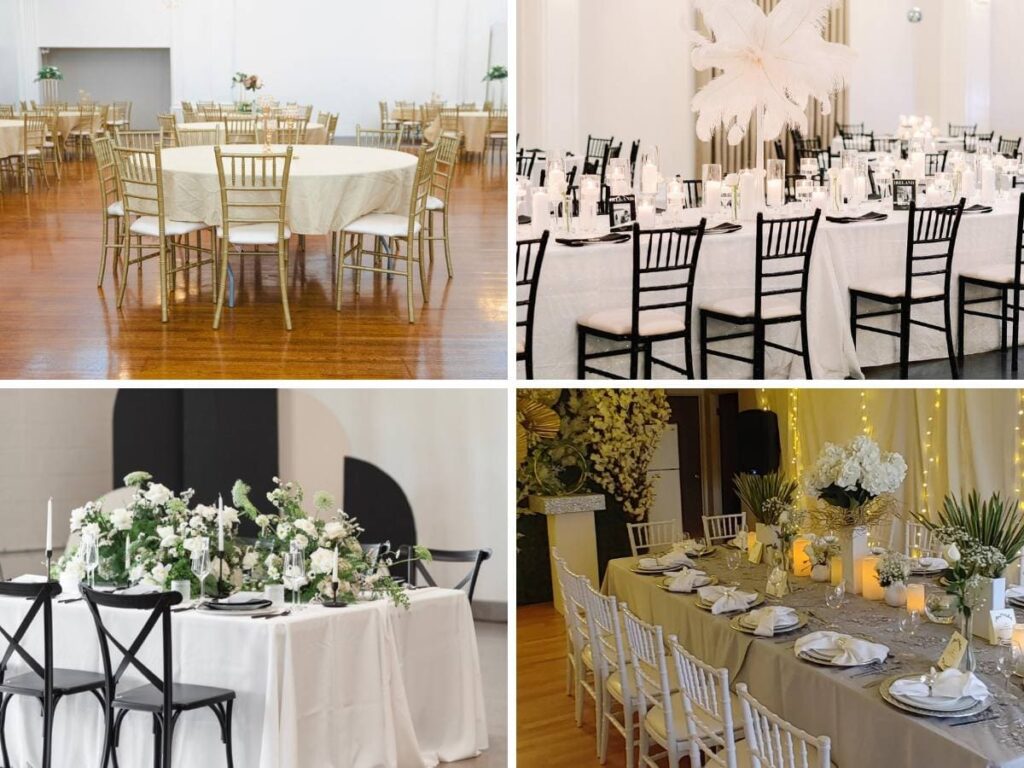
Moreover, each table shape offers unique possibilities for layout and use, catering to various event styles and requirements. Understanding how to maximize the potential of each table shape can greatly enhance the functionality and aesthetics of your event space. Here’s a look at the versatile uses of round, rectangular, and square tables:
Utilizing Round Tables
- Intimate Gatherings and Weddings: Round tables are ideal for creating a sense of intimacy among guests. They facilitate easy conversation and are perfect for weddings and family gatherings.
- Gala Dinners and Award Ceremonies: Their circular layout makes them suitable for events where guest interaction is key, such as gala dinners or award ceremonies.
- Flexible Room Layouts: Round tables offer flexibility in room layouts, allowing for circular, semi-circular, or scattered arrangements to optimize space and flow.
Maximizing Rectangular Tables
- Conferences and Seminars: Rectangular tables are excellent for conferences and seminars, where linear seating is preferred for presentations and discussions.
- Banquet Style Events: They can be arranged in long rows for banquet-style seating, creating a classic and elegant setting for formal dinners.
- Combining Tables for Larger Layouts: Rectangular tables can be combined end-to-end to create longer rows or placed side by side to form U-shaped or T-shaped layouts, offering versatility for larger events.
Creative Uses for Square Tables
- Modern and Casual Events: Square tables lend a contemporary feel to events and are great for casual gatherings, offering a unique alternative to traditional layouts.
- Small Group Interaction: They are particularly effective for events focusing on small group interactions, such as workshops or networking events.
- Combining for Larger Spaces: Square tables can be combined to create larger dining surfaces or interesting geometric layouts, adding a creative touch to any event.
3. Selecting the Ideal Banquet Table for Your Event

Lastly, choosing the right banquet table for your event involves a wide variety of considerations; it’s about functionality, space optimization, aesthetics and guest comfort. Here are some key considerations to help you make the best choice:
Tailoring Table Choice to Event Style
- Event Ambiance: The choice of table can enhance the overall ambiance of the event, whether it’s formal, casual, or somewhere in between. Therefore, choose wisely
- Guest Dynamics: The different table shapes can foster different types of interactions among guests. Round tables might encourage more group conversations and a sense of unity, while rectangular tables could facilitate a more organized seating arrangement, ideal for events with speakers or presentations.
Space Optimization and Guest Comfort
- Venue Layout: Assess your venue’s space and capacity to maximize room efficiency. Rectangular tables may suit long, narrow rooms, while round tables often work better in large, open spaces.
- Comfort vs. Capacity: Balance the need to maximize seating with ensuring a comfortable experience for guests.
4. Leveraging Technology for Efficient Event Layout Planning

Finally, modern technology can revolutionize event planning, especially in layout planning.
Digital Tools for Event Layouts
- Virtual Planning Applications: Utilize apps and software for visualizing and planning table layouts. These tools can be invaluable for event planners to create accurate and efficient designs.
- Realistic Previews with 3D Modeling: Employ 3D modeling tools for a more accurate representation of the event space, offering a realistic preview of the layout.
Advantages of Tech-Enabled Planning
- Precision in Planning: Technology can aid in precise and efficient planning, minimizing potential layout issues.
- Enhancing Client Engagement: Incorporating technology in your planning process can give you a competitive edge, as these tools allow for interactive client sessions and collaborative planning.
These are some applications
- SmartDraw: An all-in-one diagramming tool that combines diagramming, whiteboarding, and data visualization. Ideal for creating detailed event layouts.
- Cvent Event Diagramming (formerly Social Tables): A collaborative event design platform that brings planners and venues together. It automates event diagrams and creates to-scale layouts within minutes, streamlining the design process and ensuring accuracy.
- Allseated: Allseated’s event planning floorplan software can help you to build your floorplans and seating arrangements. A major benefit to designing wedding and event floorplans using Allseated’s 3D floorplan software is the ability to view layouts in 2D and 3D.
In conclusion, by considering factors like event style, guest dynamics, and venue layout, and by leveraging modern technology for layout planning, you can ensure that your event not only looks great but also runs smoothly. Remember, the right table arrangement can transform a simple gathering into an unforgettable experience for your guests.


